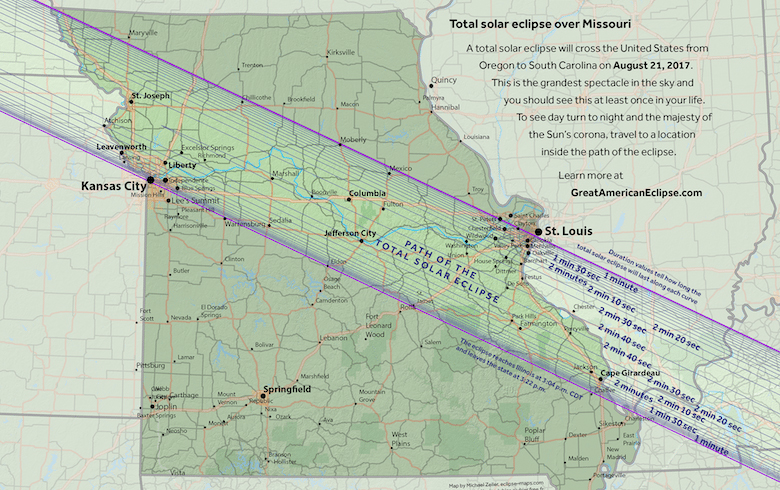
For nearly 13 minutes on Mon., Aug. 21, 2017, Missourians in a 70-mile swath stretching catty-corner from St. Joseph in the Northeast to Cape Girardeau in the Southeast will witness the totality of the moon obscuring the sun, otherwise referred to as a total solar eclipse. Totality will last anywhere from a few seconds to 2:39 depending upon a viewer’s specific location. During that time, darkness will fall, temperatures may drop 10-15 degrees, breezes may vanish, insects will come out, stars and planets will be visible, and if one lives on a farm, the animals may head toward the barn.
When looking at the sun, safety is important. Here’s a list of eye safety suggestions from the American Astronomical Society for viewing a solar eclipse.
This will be the first total solar eclipse to touch the United State since 1991 when one occurred in Hawaii, and the first coast-to-coast across the southern U.S. since 1918. The last time a total solar eclipse occurred in the greater St. Louis area was 1442. St. Louisans can expect the next one in 2505.
Eclipse-chasers from around the world are expected to converge in St. Louis and the areas beyond as about half of both Kansas City and St. Louis lie within the patch of totality. Consider that more than 43 million people live in large metro areas outside of the totality path where St. Louis is the closest large city, making St. Louis a main destination. Hotel rooms will be at a premium during the period and travelers are encouraged to book their accommodations and travel plans in advance to ensure the best possible experience.
Viewers in St. Louis are recommended to head to parks south and southwest of the city. One notable fact is that Jefferson City is one of only four U.S. state capitals located in the totality path. The others include Salem, Oregon; Nashville, Tennessee; and Columbia, South Carolina.
(CLICK HERE TO CONTINUE READING)
